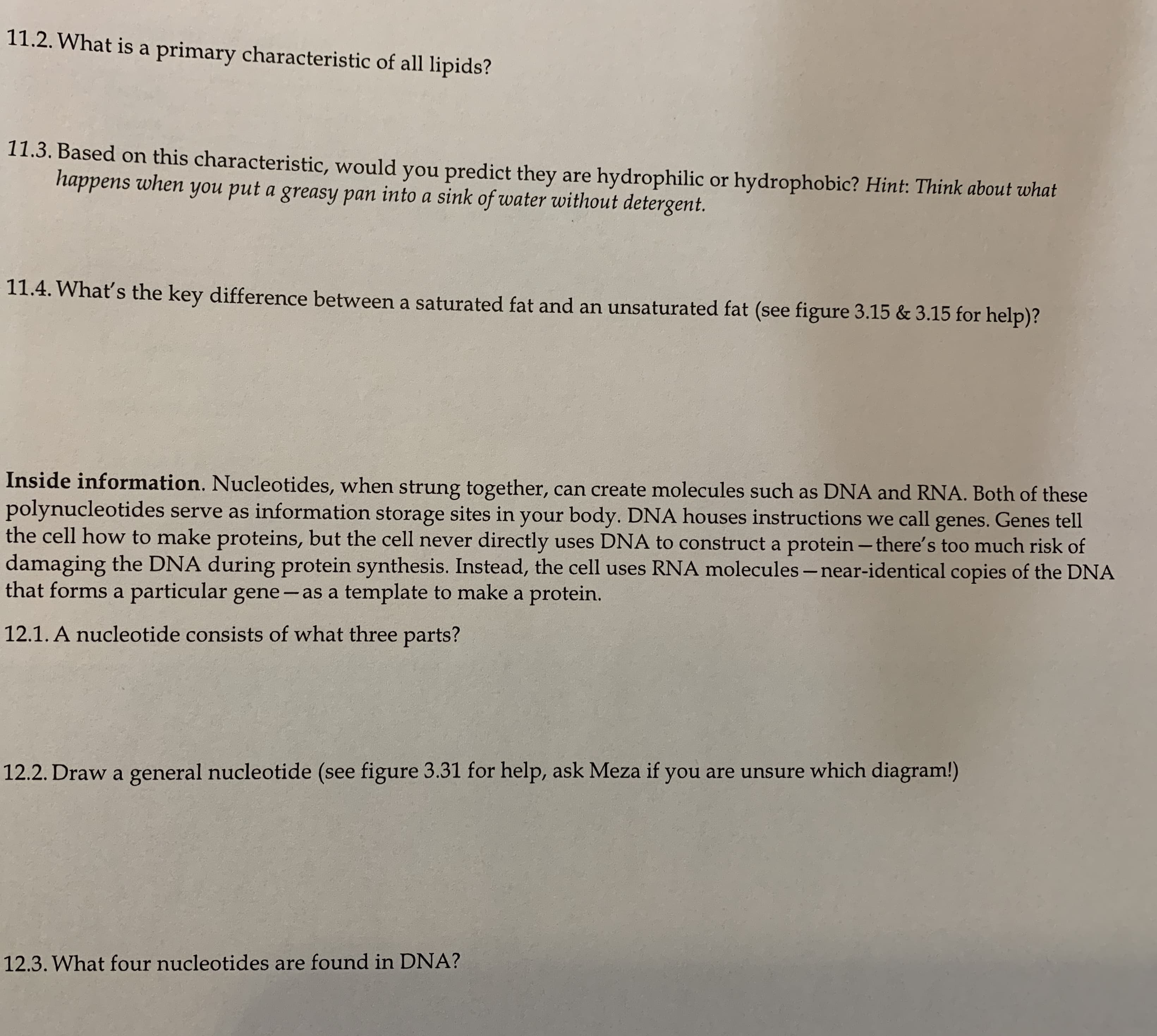11.2. What is a primary characteristic of all lipids? 11.3. Based on this characteristic, would you predict they are hydrophilic or hydrophobic? Hint: Think about what happens when you put a greasy pan into a sink of water without detergent. 11.4. What's the key difference between a saturated fat and an unsaturated fat (see figure 3.15 & 3.15 for help)? Inside information. Nucleotides, when strung together, can create molecules such as DNA and RNA. Both of these polynucleotides serve as information storage sites in your body. DNA houses instructions we call genes. Genes tell the cell how to make proteins, but the cell never directly uses DNA to construct a protein - there's too much risk of damaging the DNA during protein synthesis. Instead, the cell uses RNA molecules – near-identical copies of the DNA that forms a particular gene-as a template to make a protein. 12.1. A nucleotide consists of what three parts? 12.2. Draw a general nucleotide (see figure 3.31 for help, ask Meza if you are unsure which diagram!) 12.3. What four nucleotides are found in DNA?

Since there are multiple questions, we are authorized to answer only the first one, that is,11.2. If you require the answers of the other questions, please post the questions separately again.
Lipids are one of the four major groups of organic molecules; the other three being proteins, nucleic acids (DNA), and carbohydrates (sugars). Lipids are made up of the same elements as carbohydrates: carbon, hydrogen, and oxygen. However, lipids tend to contain many more hydrogen atoms than oxygen atoms.
Lipids include fats, steroids, phospholipids, and waxes. Lipids play an important role in living organisms. Some of their main functions include energy storage, hormones, and cell membranes.
One main characteristic of lipids is that they are non-polar molecules, which means that they do not dissolve in water.
Trending now
This is a popular solution!
Step by step
Solved in 3 steps









